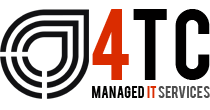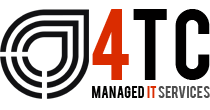The Cultural Shift Towards A Cloud-Native Mindset
Markets are real-time indicators of seismic changes in the global business terrain – be it a pandemic, a change in regime, a stray wind in the Suez Canal, or technological innovations that rewrite consumer culture. An oft-cited example of a cultural shift brought in by the new possibilities in Cloud platforms, is the consumers’ need to get content when they want, wherever they are. No-frills, anytime, anywhere, any-device, personalized, on-demand content.
As these new realities of the Cloud emerge overnight, businesses are racing to anticipate the next big thing to tap the white spaces – or at least keep up with the rapid changes in consumer trends.
A new mindset for new business models
For every conversation on building Cloud-based applications and delivering solutions on the Cloud, there seems to be an equally weighted conversation on “adopting a Cloud mindset”. We can, of course, list the obvious line-up of focus topics: lift-and-shift vs Cloud-native thinking, heavyweight monolithic apps vs lightweight microservices, traditional security vs Cloud security and so on. Yes, these are critical pieces in the mindset shift – but do they cover the human aspect of how we work? Can we bring in a culture that naturally prompts us to explore opportunities mapped to these new business models? In other words, stir things up a bit – I don’t mean rocking the boat but maybe questioning the status quo.
Exploring the ‘why nots’
Maybe a quick look at the titans, to start with …
Amazon successfully transformed the business of selling books, and before you knew it, they were already into pure-play online retailing beyond books – challenging all the omnichannel giants in this space by pushing the boundaries of just one channel. The trigger: the discovery that by learning more about our customers, we can sell them anything.
As they say: “If you do what you’ve always done, you’ll get what you’ve always gotten”. Netflix has surfed the blue oceans of the entertainment industry, conquering each big wave as the waters turned red: be it DVDs, streaming, or original content.
Markets are real-time indicators of seismic changes in the global business terrain – be it a pandemic, a change in regime, a stray wind in the Suez Canal, or technological innovations that rewrite consumer culture. An oft-cited example of a cultural shift brought in by the new possibilities in Cloud platforms, is the consumers’ need to get content when they want, wherever they are. No-frills, anytime, anywhere, any-device, personalized, on-demand content.
As these new realities of the Cloud emerge overnight, businesses are racing to anticipate the next big thing to tap the white spaces – or at least keep up with the rapid changes in consumer trends.
A new mindset for new business models
For every conversation on building Cloud-based applications and delivering solutions on the Cloud, there seems to be an equally weighted conversation on “adopting a Cloud mindset”. We can, of course, list the obvious line-up of focus topics: lift-and-shift vs Cloud-native thinking, heavyweight monolithic apps vs lightweight microservices, traditional security vs Cloud security and so on. Yes, these are critical pieces in the mindset shift – but do they cover the human aspect of how we work? Can we bring in a culture that naturally prompts us to explore opportunities mapped to these new business models? In other words, stir things up a bit – I don’t mean rocking the boat but maybe questioning the status quo.
Exploring the ‘why nots’
Maybe a quick look at the titans, to start with …
Amazon successfully transformed the business of selling books, and before you knew it, they were already into pure-play online retailing beyond books – challenging all the omnichannel giants in this space by pushing the boundaries of just one channel. The trigger: the discovery that by learning more about our customers, we can sell them anything.
As they say: “If you do what you’ve always done, you’ll get what you’ve always gotten”. Netflix has surfed the blue oceans of the entertainment industry, conquering each big wave as the waters turned red: be it DVDs, streaming, or original content.
Identifying the parts that can be changed
The switch, of questioning the status quo and doing things differently, can be (and should be) applied at any point or activity along the innovation and development lifecycle. As creatures of habit, it is natural and comfortable to believe that “if it ain’t broke, don’t fix it.”
I am sure there are enough examples to illustrate the wisdom in this maxim. However, in the complex landscapes of the enterprise business, you can find hundreds of heavy or redundant processes that exist today just because they “ain’t broke”. A big chunk of these heavyweight processes is repetitive and manual.
What stops us from deploying intelligent bots to automate these processes? As an intelligent-enterprise major in the business software industry and a strong performer in RPA, SAP allows you to automate repetitive, manual processes by creating, scheduling, managing, and monitoring intelligent bots with SAP Intelligent RPA.
Delivering consumable increments
Yes, bite-sized servings not only plate better but are also consumed better. Big-bang releases make for great headlines – but closes the door to iterative feedback, incremental improvements, and course corrections. Small requirements can snowball, across the value chain, into huge gaps, if we don’t make room to reflect on our progress.
Empowering teams
With deep hierarchies in large organizations, employees often face excessive red tape, delayed approvals, and slow decision-making. The rigidity and complexity from the top are often cascaded down the hierarchy. One way to stop the cascade is empowering teams to be agile and to own their decisions. Agile teams train to focus on the essentials – everything else is considered as noise that distracts from their goals. Agility is the answer to the “big-cheese-small-fry” logjam.
Promoting openness
An innovative culture rests on the pillars of honest collaboration and trust. The freedom to voice points of view and expert opinions without undue policing and repercussions has always been the precursor to creativity and thought leadership. The value of community sharing has never looked better, with proprietary tech giants making 180˚ shifts to open sourcing. Development teams are microcosms of these large, global communities and sharing within internal networks is a great place to start.
Celebrating mistakes
An extension of empowerment is ownership. Moving away from the overcautious mindset of avoiding mistakes, a cloud native culture embraces failure as it promotes open-mindedness, preparedness, exploration, risk-taking, and adventure.
Indulging the crazy
A truly innovative team is a safe space for diversity – in demographics, perspectives, abilities, and extraordinary interpretations. Examples: the crazy extrapolation of lightweight and compact space technology realized in everyday items such as scratch-resistant lenses, memory foams, and camera phones.
Culture drives innovation; innovation drives culture – but neither scenario is sustainable without passionate people in the mix. A great analogy of this was coined by the author Antoine de Saint-Exupery:
“If you want to build a ship, don’t drum up the men to gather wood, divide the work and give orders. Instead, teach them to yearn for the vast and endless sea.”
The switch, of questioning the status quo and doing things differently, can be (and should be) applied at any point or activity along the innovation and development lifecycle. As creatures of habit, it is natural and comfortable to believe that “if it ain’t broke, don’t fix it.”
I am sure there are enough examples to illustrate the wisdom in this maxim. However, in the complex landscapes of the enterprise business, you can find hundreds of heavy or redundant processes that exist today just because they “ain’t broke”. A big chunk of these heavyweight processes is repetitive and manual.
What stops us from deploying intelligent bots to automate these processes? As an intelligent-enterprise major in the business software industry and a strong performer in RPA, SAP allows you to automate repetitive, manual processes by creating, scheduling, managing, and monitoring intelligent bots with SAP Intelligent RPA.
Delivering consumable increments
Yes, bite-sized servings not only plate better but are also consumed better. Big-bang releases make for great headlines – but closes the door to iterative feedback, incremental improvements, and course corrections. Small requirements can snowball, across the value chain, into huge gaps, if we don’t make room to reflect on our progress.
Empowering teams
With deep hierarchies in large organizations, employees often face excessive red tape, delayed approvals, and slow decision-making. The rigidity and complexity from the top are often cascaded down the hierarchy. One way to stop the cascade is empowering teams to be agile and to own their decisions. Agile teams train to focus on the essentials – everything else is considered as noise that distracts from their goals. Agility is the answer to the “big-cheese-small-fry” logjam.
Promoting openness
An innovative culture rests on the pillars of honest collaboration and trust. The freedom to voice points of view and expert opinions without undue policing and repercussions has always been the precursor to creativity and thought leadership. The value of community sharing has never looked better, with proprietary tech giants making 180˚ shifts to open sourcing. Development teams are microcosms of these large, global communities and sharing within internal networks is a great place to start.
Celebrating mistakes
An extension of empowerment is ownership. Moving away from the overcautious mindset of avoiding mistakes, a cloud native culture embraces failure as it promotes open-mindedness, preparedness, exploration, risk-taking, and adventure.
Indulging the crazy
A truly innovative team is a safe space for diversity – in demographics, perspectives, abilities, and extraordinary interpretations. Examples: the crazy extrapolation of lightweight and compact space technology realized in everyday items such as scratch-resistant lenses, memory foams, and camera phones.
Culture drives innovation; innovation drives culture – but neither scenario is sustainable without passionate people in the mix. A great analogy of this was coined by the author Antoine de Saint-Exupery:
“If you want to build a ship, don’t drum up the men to gather wood, divide the work and give orders. Instead, teach them to yearn for the vast and endless sea.”
We’re 4tc Managed IT Services
4TC can support you with all the services you need to run your business effectively, from email and domain hosting to fully managing your whole IT infrastructure.
Setting up a great IT infrastructure is just the first step. Keeping it up to date, safe and performing at its peak requires consistent attention.
So we can act as either your IT department or to supplement an existing IT department. We pride ourselves in developing long term relationships that add value to your business with high quality managed support, expert strategic advice, and professional project management.
News Source: https://www.forbes.com

Email: support@4tc.co.uk
Tel: 020 7250 3840
London Office
5th Floor, 167‑169 Great Portland Street
London
W1W 5PF
Essex Office
Dew Gates The Street
High Roding
Essex
CM6 1NT



